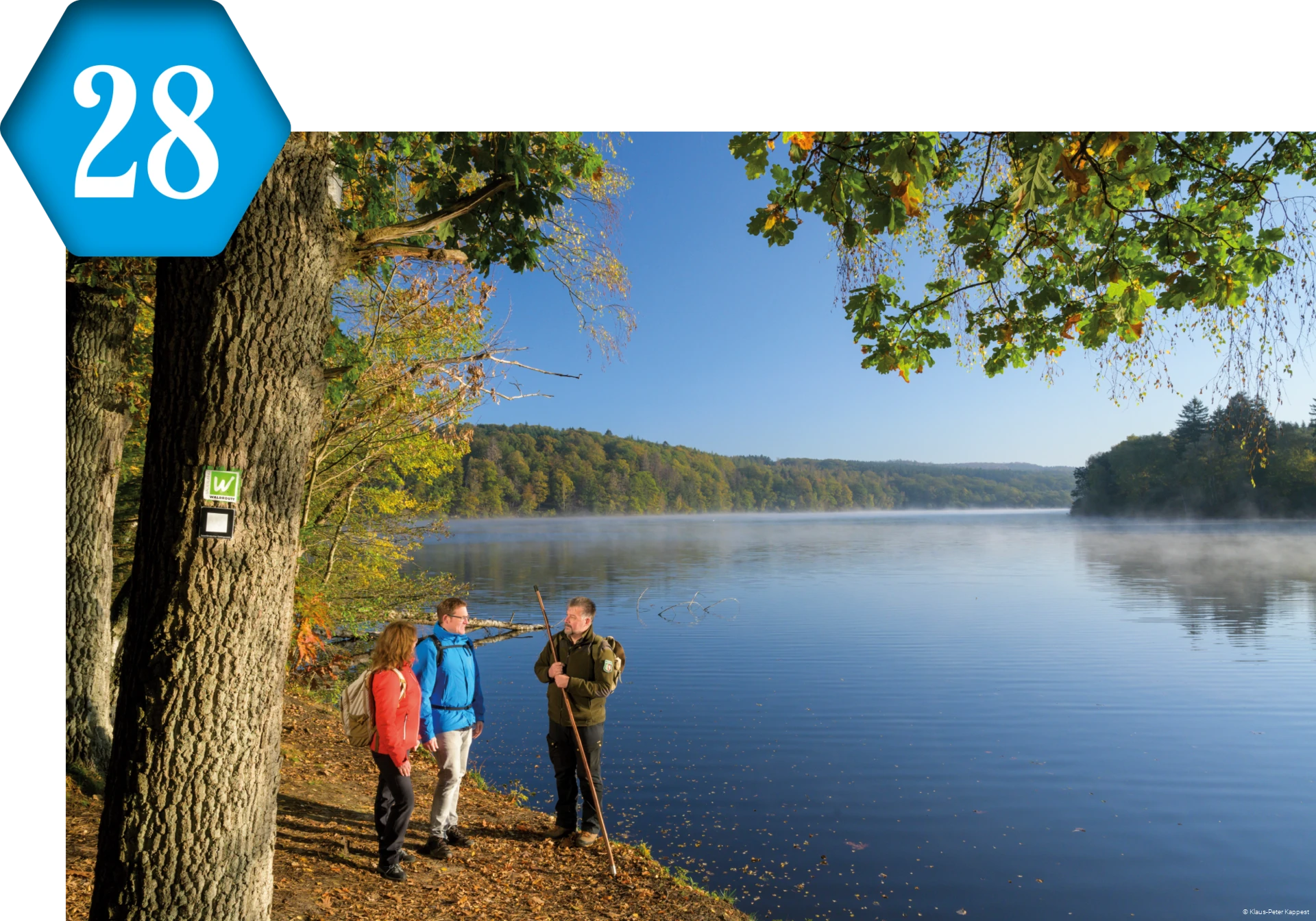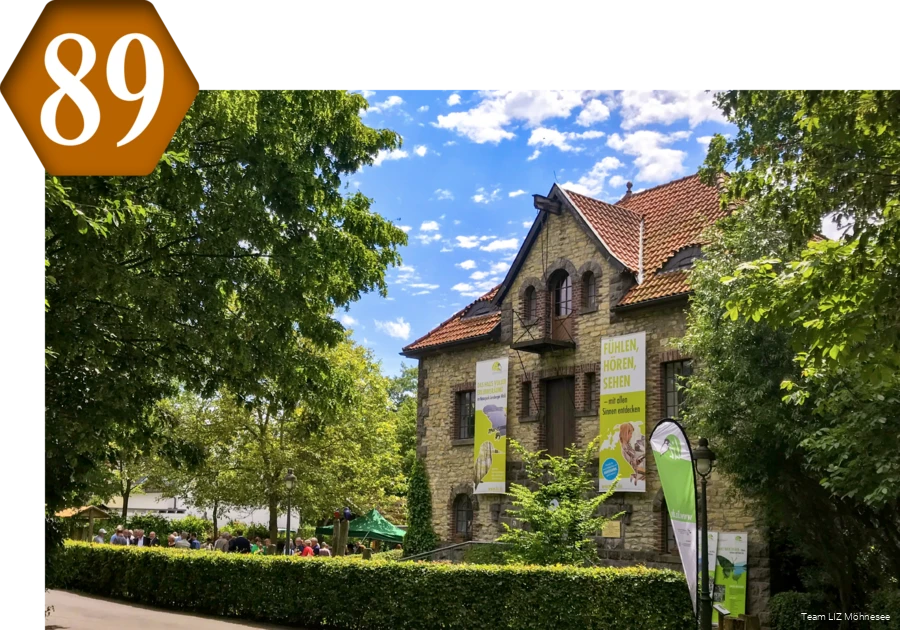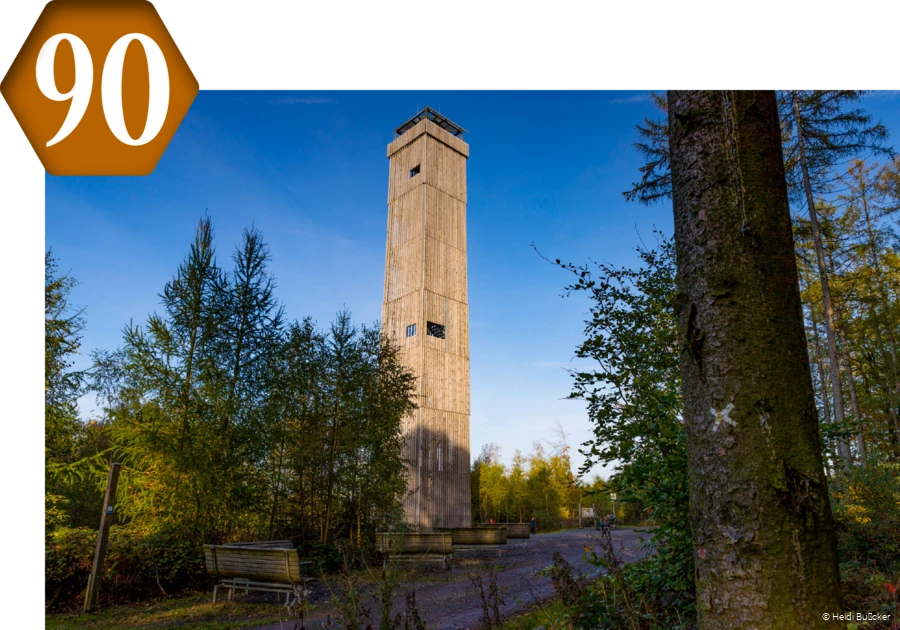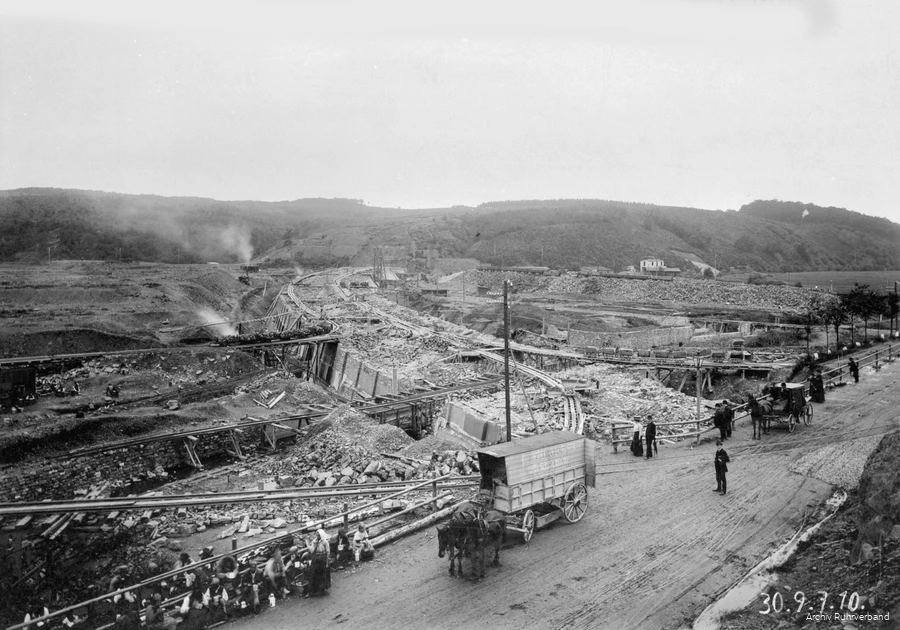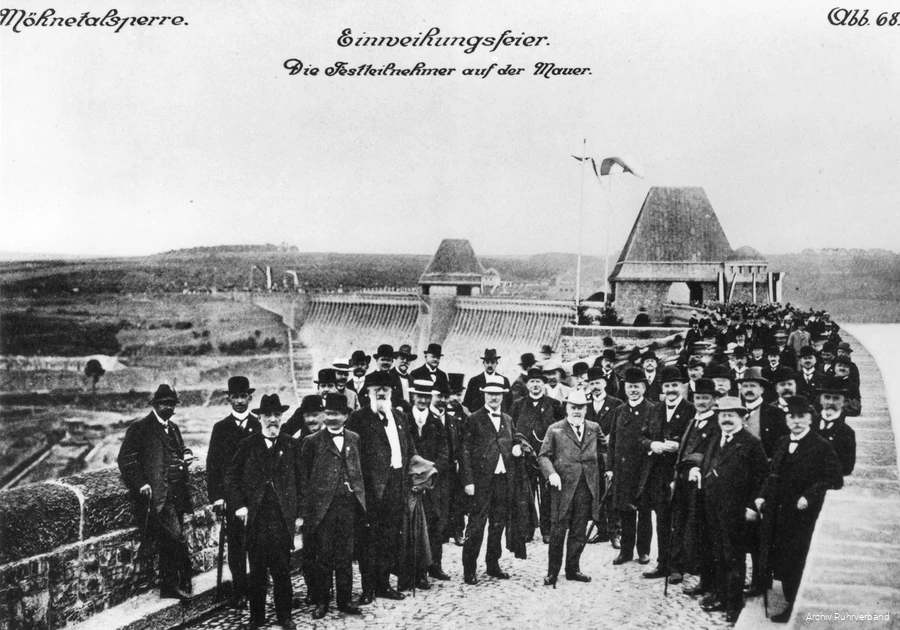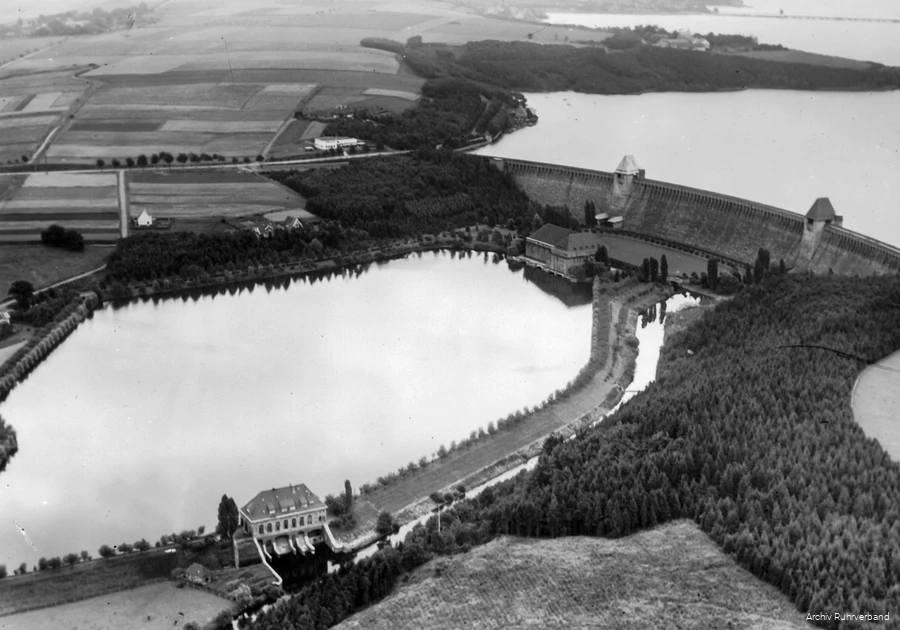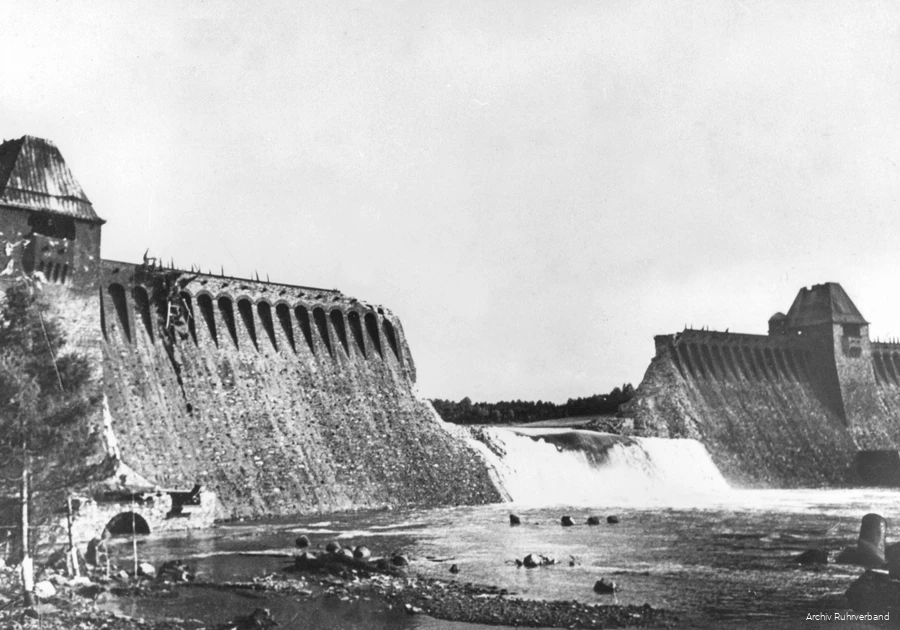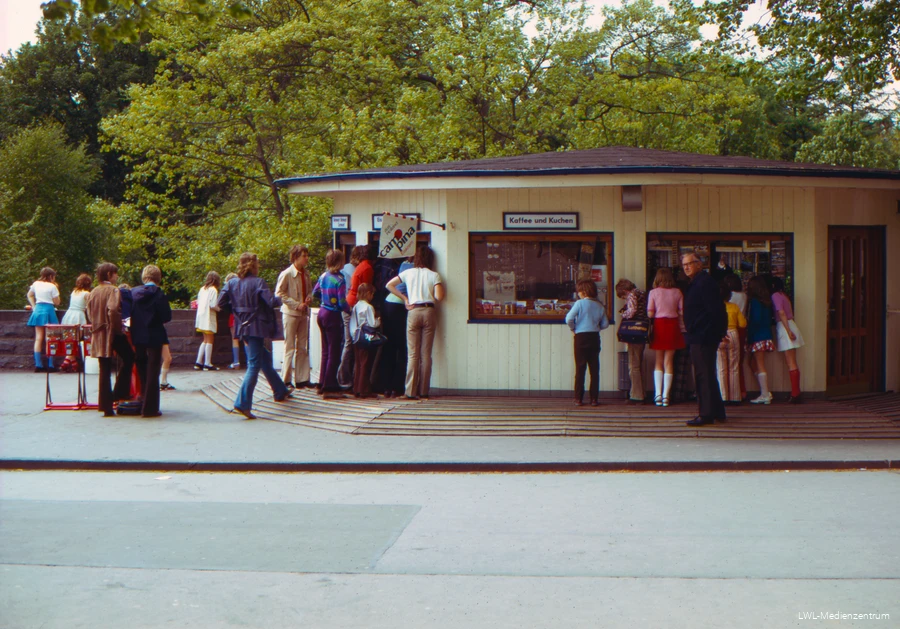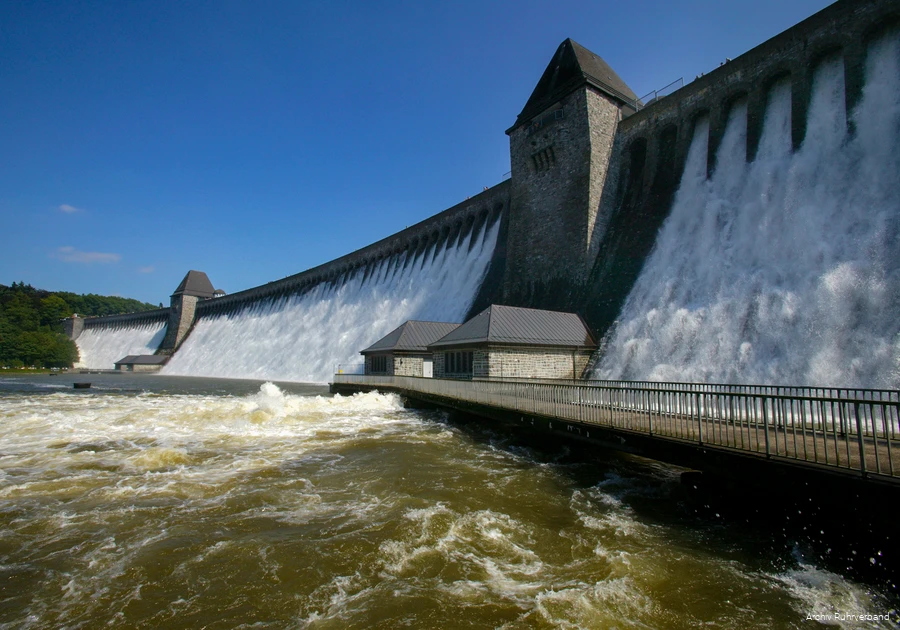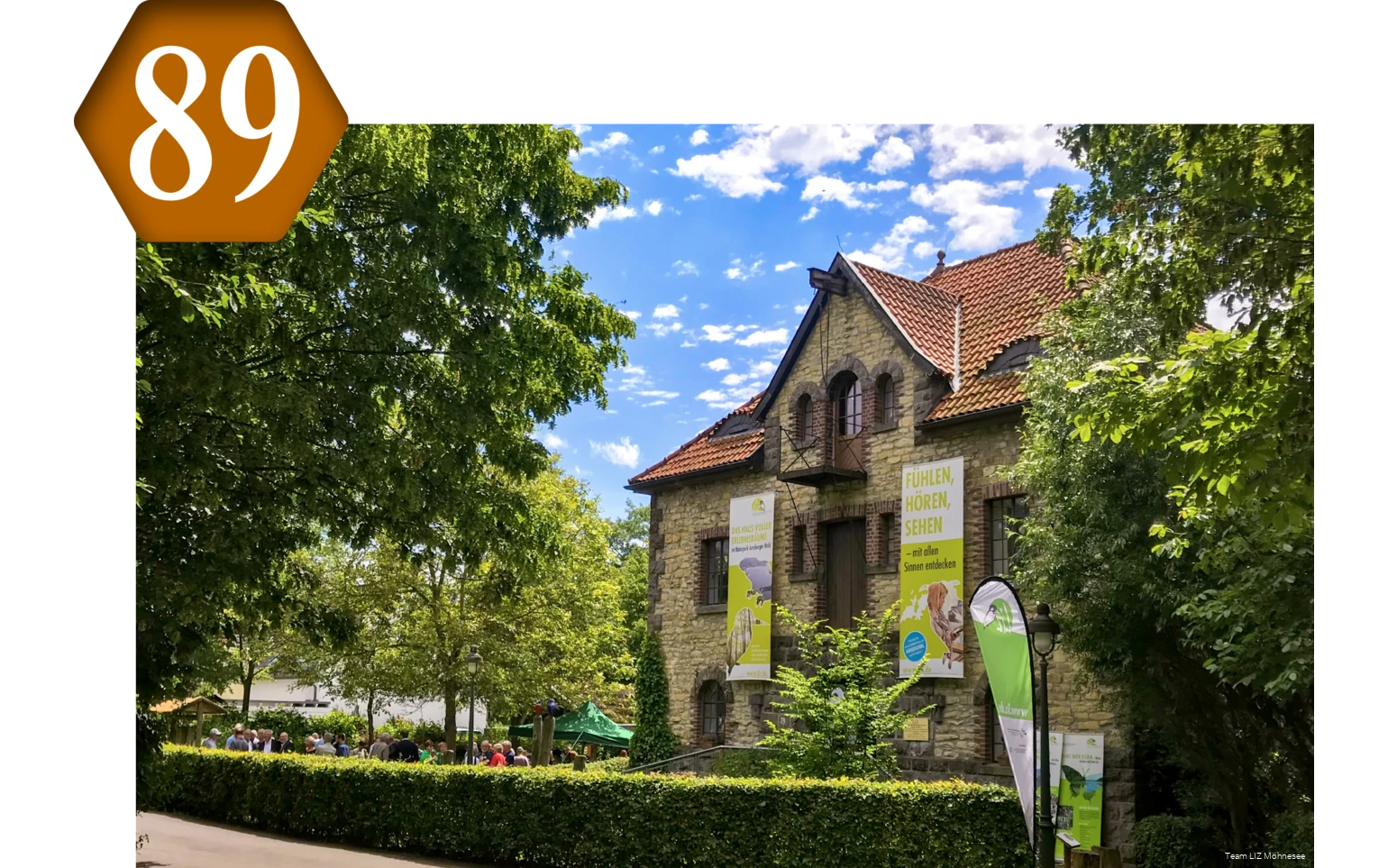Status of construction work on July 6, 1910
Möhne Valley Dam
The Colossus of Rhodes was an ancient wonder of the world. The Möhne reservoir has its own colossus: the 40-metre-high dam is Westphalia's heaviest monument and spectacularly located in the region's most diverse area for leisure activities. However, there are sound reasons for its construction more than 100 years ago: without this water reservoir, the Ruhr conurbation would be left high and dry …
- Infotext read more
-
… Indeed, Germany's former industrial pacemaker is hooked to the Ruhr. In order to regulate the water level, Lake Möhne has been adding water since 1913. To find out how, visit the Landscape Information Centre for Water and Woods. Surrounding it are plenty of outdoor adventures – swimming, surfing, boating as well as hiking and cycling tours across the Arnsberg Forest Nature Park.
So why think of Intze wedge or "Dam Buster"? Yet these terms reveal more about the significance of the reservoir than mere figures on its size and extent. Otto Intze, a hydraulic engineer from Aachen, shapes German dam construction around 1900 like no other and also advises the Ruhr Reservoir Association, established in 1899. The result is a dam based on the Intze principle: its stability is due solely to the enormous weight of mortared rubble stone, and at its base on the water side it has an artificial fill of clay. This wedge, which is now considered obsolete, is supposed to additionally seal and stabilise the wall, which has to withstand 134 million cubic metres of water.
It is precisely this stability that the Dam Busters want to destroy. They are British pilots who, in May 1943, cut a 77-metre-wide breach in the dam by using special bombs, thus losing 53 of the 133 troops involved and gaining fame as the "Dam Busters". The flood wave kills more than 1,600 people, including many forced labourers. The severe impact of the attack on the Nazi military industry in the Ruhr District is demonstrated by the fact that it is repaired in record time: after only five months, the wall is back to its full height.
In 1913, at the time of its commissioning, the Möhne Valley Dam is the largest dam in Europe. 700 people and five villages have to make way for its construction, and a total of 200 buildings are about to be flooded. Two integrated waterworks – an innovation in dam construction at the time – allow electricity to be generated. Today, after the Bigge dam, the Möhne lake is the second largest water reservoir in the Ruhr watershed.
Steel Time Travel Destinations Nearby
Die „Stahl•Zeit•Reisenden“ Luise & Alfred: Möhne Valley Dam
Lu:
Delecke, Belecke … die Möhnetaler beweisen Humor bei ihren Ortsnamen. Ist aber auch eine schöne „Ecke“ hier. Wald und Hügel und Wald und Wasser …
- Full dialog text
-
Lu: Delecke, Belecke ... the Möhnetal prove humor with their place names. But it is also a beautiful "corner" here. Forest and hills and forest and water ...
Al: You don't say, Lu! These are the raw materials, the energy sources - the elixir of life for the enterprises of the future and ...
Lu: You don't want this beautiful Arnsberg forest to be burned for steel, do you? That's why you city dwellers come to the Sauerland, "open air" - to the summer retreat!
Al: Far from it! That's why we have the black gold in the Pütt, which we also bring here to you in the province! I am thirsty for more of the wet element. There's room here for the biggest wall and a huge water reservoir! So that we finally have enough to live on. "Small is simply not enough.
Lu: Yes, yes - higher than the Great Wall of China and just let the place Delecke sink! Presumptuous or foolhardy? I'd rather not imagine a dam bursting.
Visitor information
Address:
Möhnestraße 8
59519 Möhnesee
Phone: 02924/981391
info@moehnesee.de
www.moehnesee.de
Opening hours:
The area is accessible 24 hours a day.
![]()
![]()
![]()
![]()
![]()
The Möhne Valley Dam (2015)
Short description (film without sound)
Contemporary photographs give an impression of the construction of the Möhne Valley Dam. The destruction of the dam during the Second World War (17.05.1943) and its consequences are also covered. The film concludes with the reconstruction and more recent photographs.
